News
PDA Steps in to Provide Relief in Syria and Turkey
February 16, 2023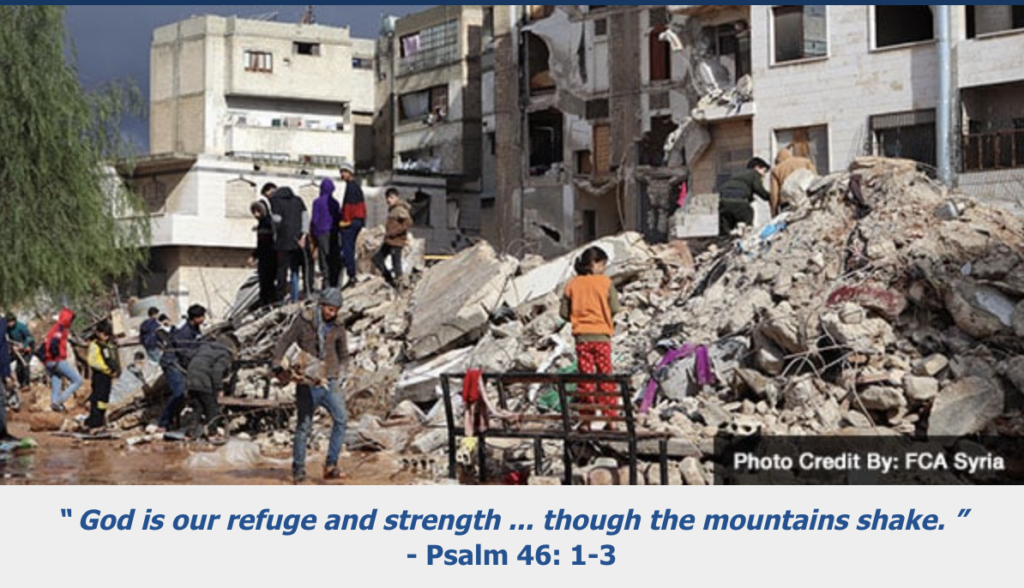
The 7.8-magnitude quake on Feb 6 and its aftershocks have left more than 35,000 people dead and thousands more injured. Buildings have been reduced to rubble, and roads and bridges have been severely damaged, resulting in dangerous conditions for first responders. In some places, such as Aleppo, this destruction is compounding the damage of the now 11-year war in Syria.
Presbyterian Disaster Assistance is providing emergency relief and short-term recovery in the impacted areas through long-standing partners in Syria, in addition to ACT Alliance members in Syria and Turkey, all of whom are already on the ground. PDA will remain active throughout the entire recovery process, accompanying our partners in the area as they determine long-term program needs and providing financial support for building and resilience.
Derry Church’s Mission & Peace Committee is sending $5,000 in support of PDA’s relief efforts, and you’re invited to add to that amount by clicking this link or writing checks to Derry Church notated “Earthquake Relief.”
Give to the Blanket Offering
February 16, 2023Throughout the month of February, Presbyterian Women are collecting for the Blanket Offering. When difficult times come, a kind and loving response can make all the difference. That is why the Church World Service Blankets Program was created: to give a kind, loving and tangible response to someone facing difficult times, reminding them that they are not alone. The program focuses on three main objectives:
- Eiminate hunger and poverty
- Help displaced persons
- Respond to disasters
A program in Jersey City, New Jersey has partnered with the founder of American Doll company to distribute sewing machines to refugees coming from Ukraine, Cuba, Afganistan and Central America. One client, Mona, is utilizing her existing skills to generate income. She is making clothes for herself and family and working as a seamstress. This program will serve 5,000 clients in 2023 helping refugees to earn a sustainable living.
Please give to the Blanket Offering as generously as you are able. Gifts can be placed in the boxes at church, mailed to the church office or given online.
Meet Hossana, One of Derry Church’s PEB Scholarship Recipients
February 16, 2023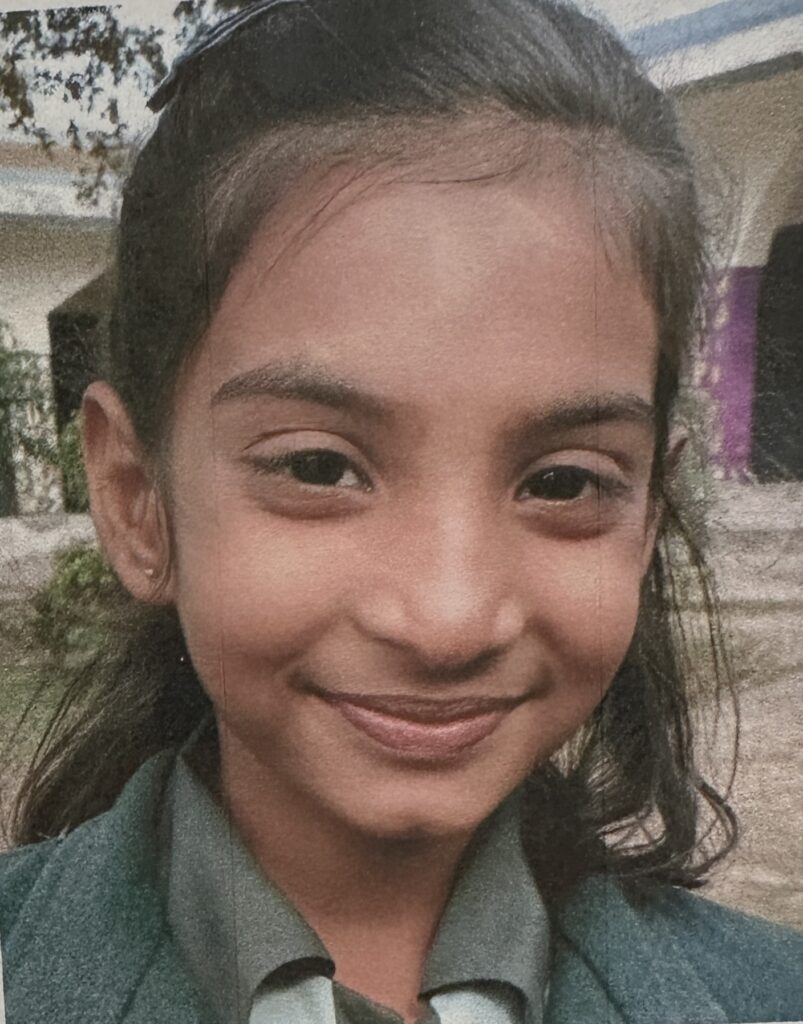
Hello friend! How are you? My name is Hossana. I study in class 4. My school is the best school in the whole city. I am grateful to you for your support towards me and my family. Because of you I can continue my studies at PEB EMS Girls Sargodha. My dad cannot fulfill the full fee of my school. I am thankful to you for holding my hand. I request you to please support me throughout my studies. We pray for you daily. I promise you, I will work harder and will become a doctor in future. May God bless you and your family.
For 12 years, Derry Church has maintained a partnership with the Presbyterian Education Board in Pakistan. PEB operates 25 schools, primary through high school, including some boarding schools, that serve more than 5,900 students. Derry, through the Friends of Sargodha group, has a particular relationship with the schools in Sargodha.
Friends of Sargodha’s goal is to continue to provide ten scholarships every year. You can help.
A full scholarship for a day student is $400 a year, about a dollar a day. We are dividing that amount into ten shares, $40 each, to offer you the opportunity to support a portion of a scholarship.
You can purchase one or more shares by writing a check to Derry Church notated “Pakistan Scholarship” or online through the church website.
Read Debbie Hough’s message inviting you to participate. This fundraiser continues through February 2023.
Register Now for Krislund Summer Fun
February 8, 2023Krislund Camp is in full swing preparing for the return of summer campers for their 60th year of ministry. Registration is open for all summer programs, so don’t wait to get your camper signed up for a week or more: click to register.
Krislund is also looking for summer staff. If you know anyone age 17-24 years old who may be interested, email Kealy at Programdirector@krislund.org or call the office at 814-422-8878.
Mardi Gras Celebration Benefits Refugee Resettlement
February 8, 2023
5-7:30 PM TUESDAY, FEB 21 AT ALL SAINTS EPISCOPAL CHURCH PARISH HALL (LOWER LEVEL OFF THE PARKING LOT), 310 ELM AVENUE, HERSHEY
Laissez les bons temps rouler! Join your friends at All Saints and “let the good times roll” on Shrove Tuesday. This year’s pancake supper takes a Cajun twist with New Orleans favorites like jambalaya, gumbo and King cake. We’ll end the evening by praying Compline and burning the palms from last year in preparation for Ash Wednesday.
Suggested donation: $7 per person / $25 cap for families. All proceeds benefit our Refugee Resettlement partnership with All Saints.
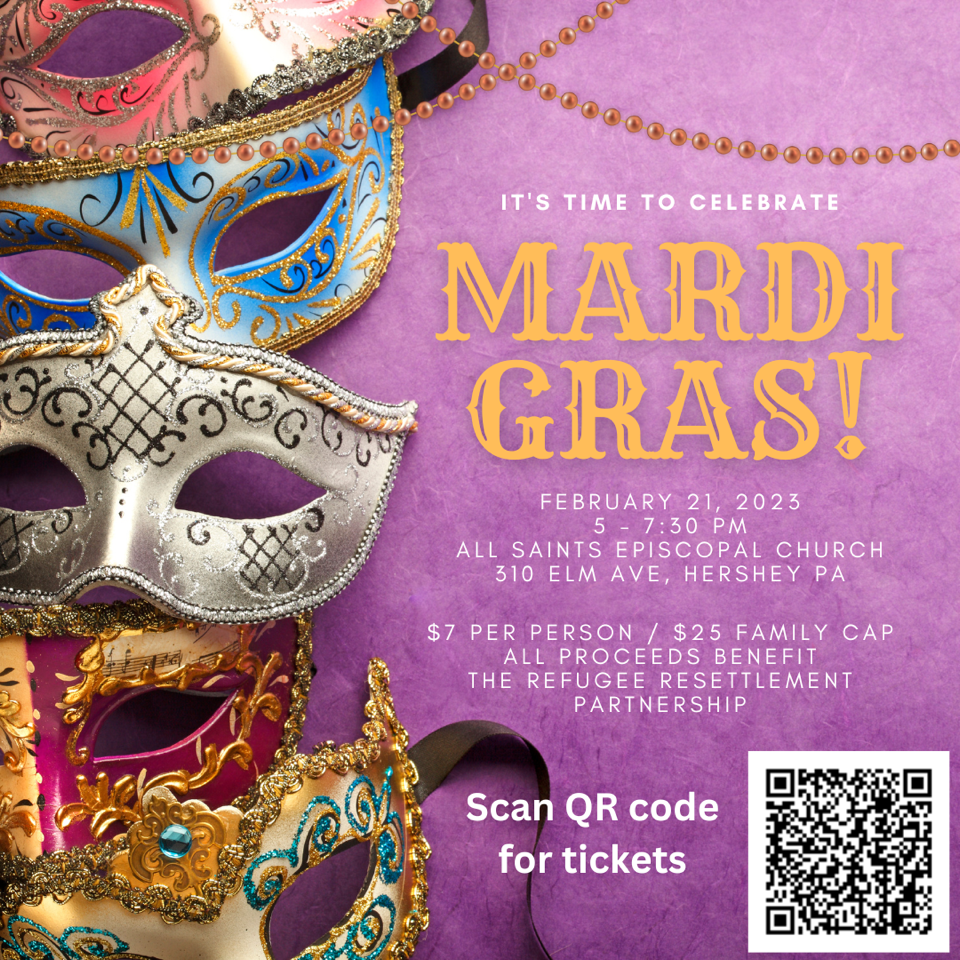
If You Can Sew, PW Needs Your Help!
February 8, 2023Kits for sewing simple drawstring hygiene bags are ready for pickup in the Presbyterian Women’s basket in the mission closet in the downstairs library. Each kit contains fabric for ten bags plus ribbons, instructions, and a sample. Please sign the paper on clipboard if you take a kit.
All bags should be completed by mid-March. Questions? Contact Doris Feil.
Meet Tabish, One of Derry Church’s PEB Scholarship Recipients
February 8, 2023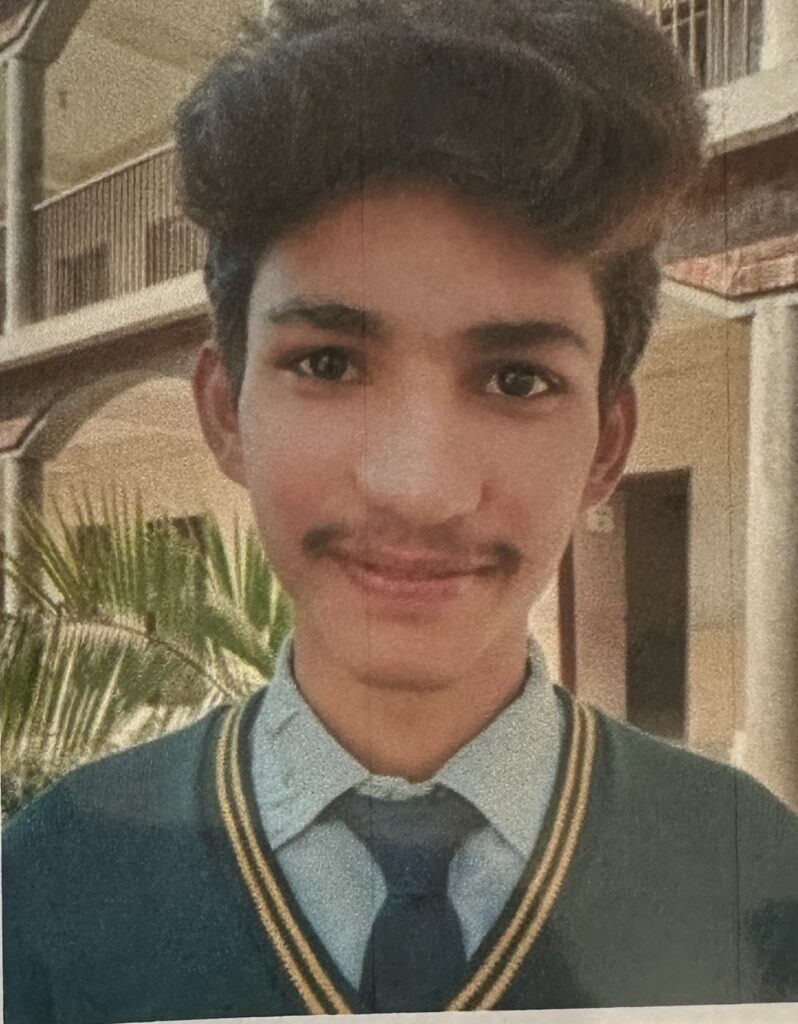
Greetings in the name of our Lord Jesus Christ. My name is Tabish. I am from Sargodha, a city famous for its oranges. I am a student of class 10. Thank you very much for your kind support and helping me in my studies. I want to become a doctor. My favorite subject is biology. I want to become helpful for my community in future. Your support is life giving in my ambitions to me. Thank you once again.
For 12 years, Derry Church has maintained a partnership with the Presbyterian Education Board in Pakistan. PEB operates 25 schools, primary through high school, including some boarding schools, that serve more than 5,900 students. Derry, through the Friends of Sargodha group, has a particular relationship with the schools in Sargodha.
Friends of Sargodha’s goal is to continue to provide ten scholarships every year. You can help.
A full scholarship for a day student is $400 a year, about a dollar a day. We are dividing that amount into ten shares, $40 each, to offer you the opportunity to support a portion of a scholarship.
You can purchase one or more shares by writing a check to Derry Church notated “Pakistan Scholarship” or online through the church website.
Read Debbie Hough’s message inviting you to participate. This fundraiser continues through February 2023.
Feb 5 is Scout Sunday!
February 1, 2023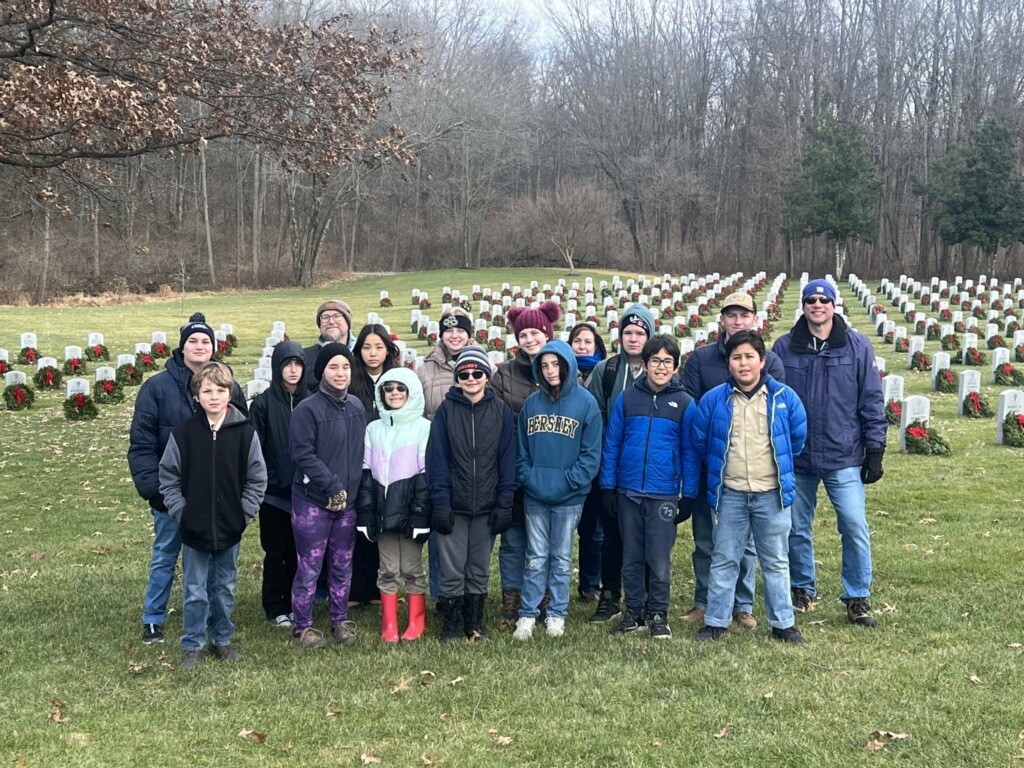
Did you know that Derry Church is host to three scouting programs?
- Pack 200 (boys and girls K-5) meets 6:30-7:30 pm on most Mondays at Derry Church: contact hersheypack200@gmail.com
or visit scoutpack200.com - Troop 200 (boys grades 6-12) meets 6:45-7:45 pm Mondays at the Scout House: contact Chris Kalmbacher.
- Troop 2200 (girls grades 6-12) meets 5:30-6:30 pm Mondays at the Scout House: contact Brian Holley.
When you see these young people in worship on Sunday morning, ask them about their scouting experience. Click for more info.
Presbyterian Women’s Winter Tea
February 1, 20232 PM SUNDAY, MAR 5 IN THE JOHN ELDER CLASSROOM
All females 1-day to 100+ years are invited to the 2023 Winter Tea. The first hour is devoted to sharing a story or picture related to the theme for this year, sharing a memory of a church leader who had an influence in your life. This can include a pastor, church school teacher, camp leader, choir director, etc. It’s a great time to get to know fellow members and children better. Afterwards, everyone can enjoy the tea and treats. RSVP to Doris Feil by Mar 1.
Coming Soon: Youth Sunday!
February 1, 20238 & 10:30 AM SUNDAY, FEB 19 IN THE SANCTUARY
Join us for a worship service planned, written, and led by our youth around the theme “the joy of the LORD is our strength.” Youth will explore the joy of the LORD through prayers, music, dance, puppets, and a message. The youth hope you will come and share in their joy on Sunday, Feb 19.
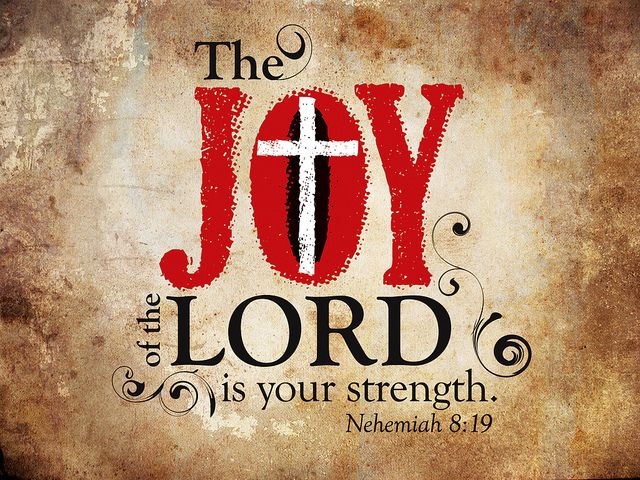
Help Derry Church Host the Lenten Luncheon on Mar 1
February 1, 2023When Derry Church hosts the mid-day Hershey Ministerium Lenten service and lunch next month, many hands are needed: volunteers to help set up, serve and clean up, as well as donations of congealed salads in 9″x 15″ pans and/or two dozen cupcakes.
Deliver food items to the kitchen any time on Tuesday or by 9 am on Wednesday, Mar 1. Contact Doris Feil if you can help in any of these ways.
Two Ways You Can Support our Refugee Family Right Now
February 1, 2023#1: Donate Items on the Wish List
Good news: our refugee family has moved from the temporary Love INC house to an apartment in Hershey. The house was furnished, so now furnishings for the new apartment are necessary. You can help by providing gently used furniture and household items from this wish list. Drop off items in Room 1.
#2: Providing Transportation to Preschool
During the month of February, volunteers are invited to provide afternoon transportation for Layan and a parent to and from their new home at Briarcrest Apartments and Derry Church (Discovery Days preschool). One parent must accompany her during travel (approximately six minutes one way). The parent will then need to be transported back to the apartment. Click to sign up. DDD starts promptly at 12:30 pm and ends at 3 pm Monday through Thursday.
Contact Kathie Parsons (717-215-8197) by phone/text for more information.
To offer more ways to help, please contact Pete Feil or Marilyn Koch.